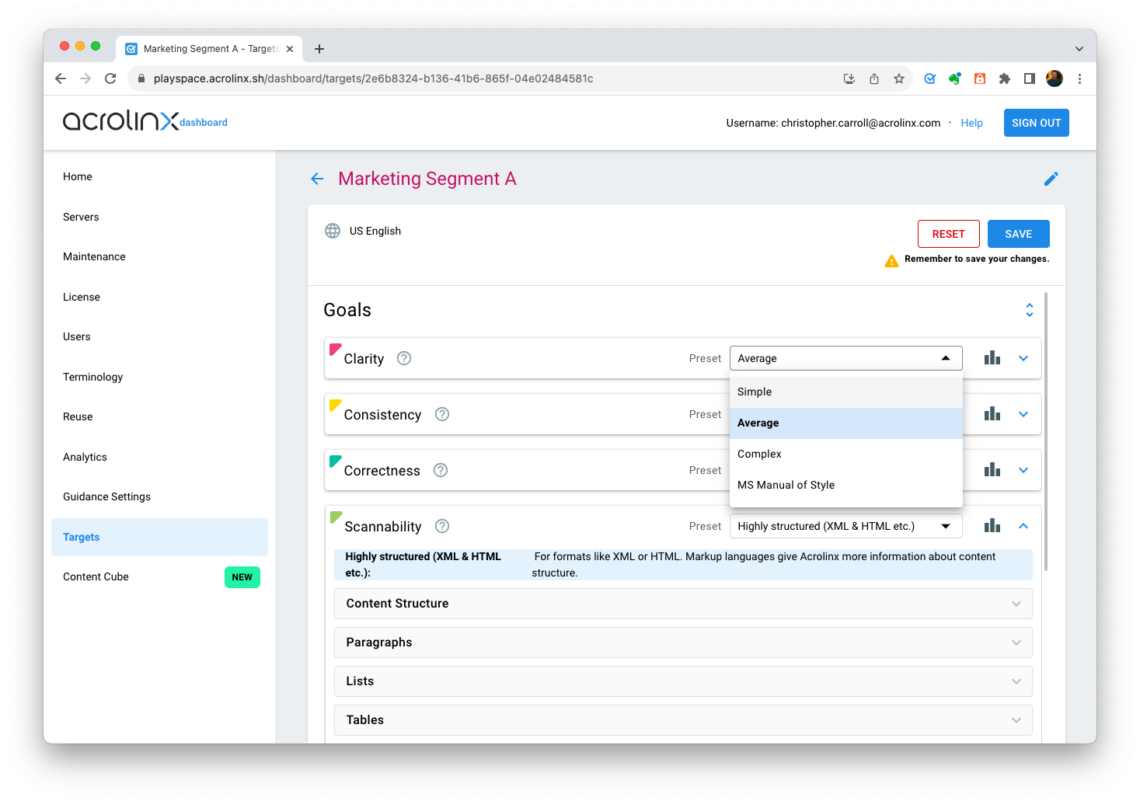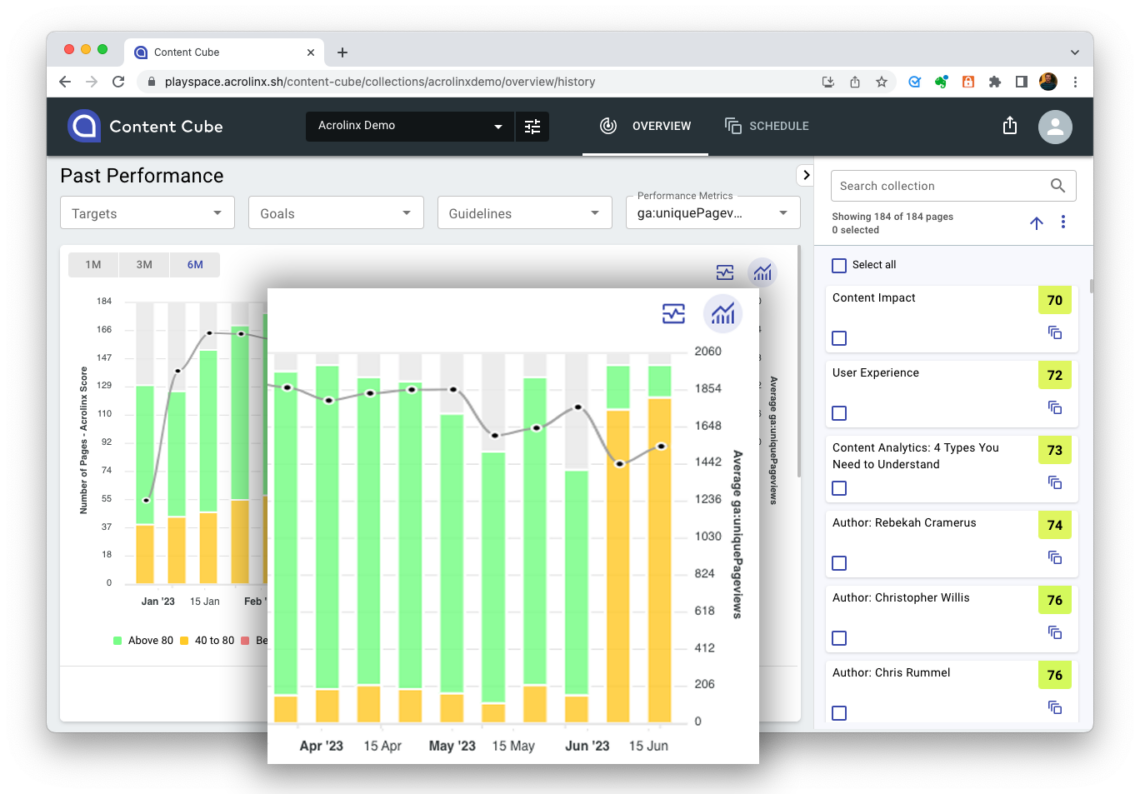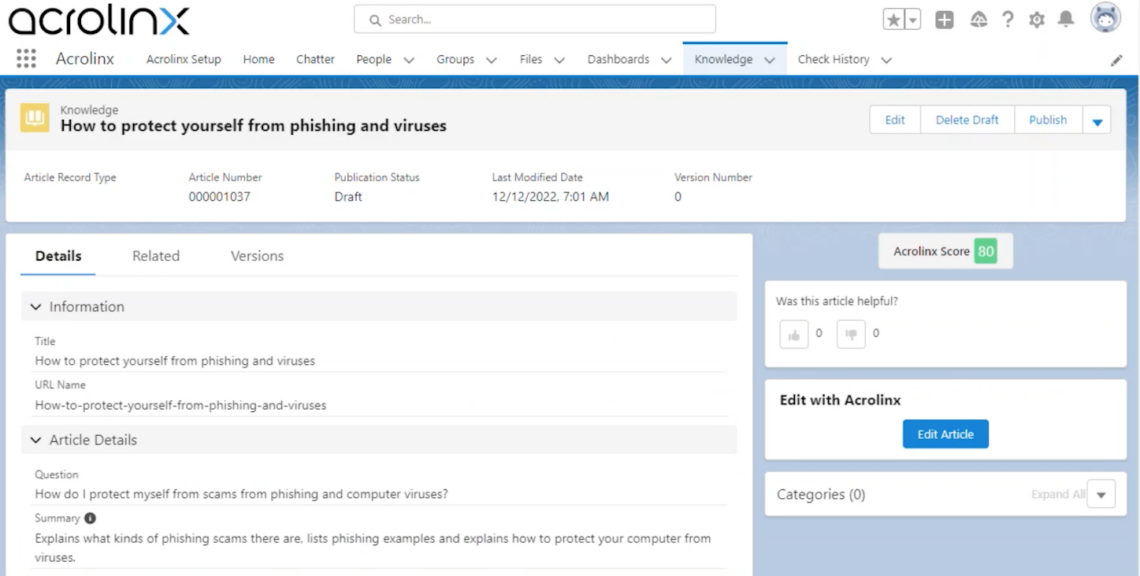Solve a problem, don’t create one
Did you know that after just one bad experience around 80 percent of customers say they’d rather do business with a competitor? That’s a scary prospect. But the good news is that the power to provide positive experiences lies within your organization. And it starts with creating effective self-service content.
Empowering customers with easy-to-find information transforms their experience. And better yet, it saves them having to make a phone call. If you can reduce the burden on support teams — and the dependency customers have on them — you free up time for those employees to focus on more high-value work.
Impactful support content is easy to find, understand, and answers questions fast. Sounds simple, but crafting that content has to be done with care and according to your brand standards. It also means more than just creating an FAQ page on your product or service, but a comprehensive knowledge base that supports all customer needs.
Below you’ll find a step-by-step guide on how to improve customer facing self-service content. And before you know it, you can say goodbye to high call volume and hello to positive customer experiences!
Step one: Create an effective self-service knowledge base
It shouldn’t be a surprise that the happiness of your customers relies on having an informative and effective knowledge base. And please, make sure it’s easy for customers to find!
We can’t overemphasize the importance of having a well-organized and user-friendly knowledge base. That means adopting best practices for structuring content, including categorization and searchability — as well as the content itself, which has to be scannable and accessible.
The information included also has to be comprehensive, including product descriptions, step-by-step processes, frequently asked questions, and troubleshooting guides. And you have to communicate all that content clearly and concisely.
With Acrolinx, you have the ultimate configuration of your style guide, meaning you set the standards when it comes to your guidance on clarity, consistency, company-specific terminology, and general style. That way your content writers are always set up for content success. The image below shows how you can configure your Acrolinx guidance:

Step two: Conduct a support content audit
As with most things, before you can move forward, you have to look backward.
It’s time to analyze your customer support data to identify recurring issues and frequently asked questions. This data should come from a variety of sources: call logs, support tickets, website traffic, knowledge base satisfaction, product materials, manuals, and customer feedback.
Insights from this analysis will help you identify which areas you need to target first. Whether that’s creating new content or refreshing and improving existing content. Prioritize topics that have the highest call logs and support web pages that have negative satisfaction. This is a reminder to have feedback buttons at the bottom of each knowledge base article. For example, “Was this helpful?” or “Did this solve your problem?” with yes/no options. Determine where your content isn’t meeting the standards of your customers and from there work to improve it.
How to do it?
- Use Acrolinx to scan local and repository documents for quality issues.
- Use an Acrolinx integration like Salesforce Knowledge to scan existing articles and help create new ones.
- Use the Acrolinx to monitor the quality of your online content.
Acrolinx provides another way to identify underperforming and ineffective online support content. By giving visibility into content performance and content quality data, you can understand how to improve underperforming content. By that we mean that you can identify which content qualities — such as clarity, grammar, brand voice, terminology, and inclusive language — need work in your content and are contributing to its lack of performance.

After identifying the underperforming content, Acrolinx adds it to a content update prioritization list. From there you can share it with the appropriate writing and editing teams so they can improve the content through the Acrolinx Sidebar. The Sidebar gives writers actionable feedback on the exact issues they need to address. And thanks to dozens of authoring integrations, writers can make the updates wherever they work.
Step three: Focus on clarity and simplicity
Clear and concise content is vital if you want to avoid customer confusion. And with Acrolinx you can configure your support content guidelines on a variety of clarity features, including:
- Sentence length
- Reading ease index level
- Difficult words
- Difficult expressions
- Acronyms
- Comma usage
- Passive voice
These different language features have a big impact on how clear and easy to understand your support content is. Customizing your guidance allows you to have total control over how you want to produce your content.
And the better news is that Acrolinx comes with presets that meet a lot of content needs. These presets give you the freedom to choose the guidance you want so you don’t have to adjust each individual guideline.
Step four: Regularly update and improve content
Support content is dynamic. Processes are constantly changing and new product releases or updates are continually rolled out. This means you need to monitor and update your support content accordingly.
For a lot of companies that means updating their Salesforce Lightning Knowledge Base. And with Acrolinx that’s made a whole lot easier with our Acrolinx for Salesforce Knowledge integration. With Acrolinx, you can check your content before and after publication with either writer-initiated checking using the Sidebar, or automated checking capabilities. Automation is just another way to improve efficiency in an otherwise manual article creation process.

Experience the benefits of:
- Faster publication of high-quality articles, with options for automated Acrolinx checks at different stages during creation.
- Greater transparency into the content quality of the entire knowledge base.
- Better findability, helping customers find articles themselves and feel empowered with easy readability, which improves the overall customer experience.
- More versatility with the ability to batch check large volumes of content at a time.
Reduce support calls with Acrolinx
The good news is that Acrolinx is here to support you every step of the way: From conducting a content audit and creating an effective self-service knowledge base, to focusing on clarity and regularly improving your content.
When you invest in creating high-quality self-service content, you generate long-term customer satisfaction and improve the customer experience. So what are you waiting for? Let’s talk today to start creating support content to be proud of.



